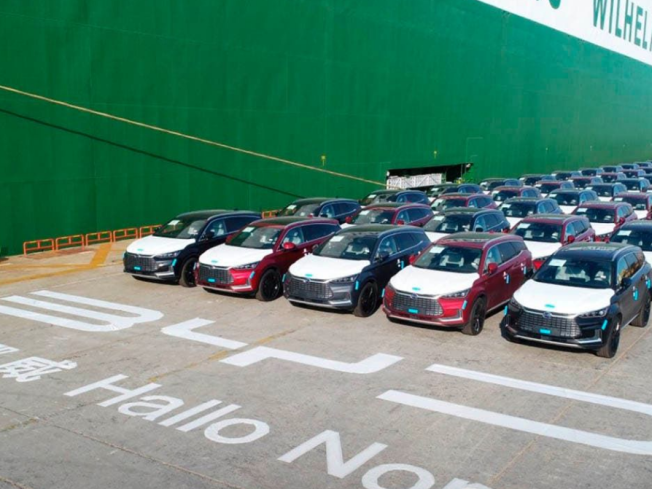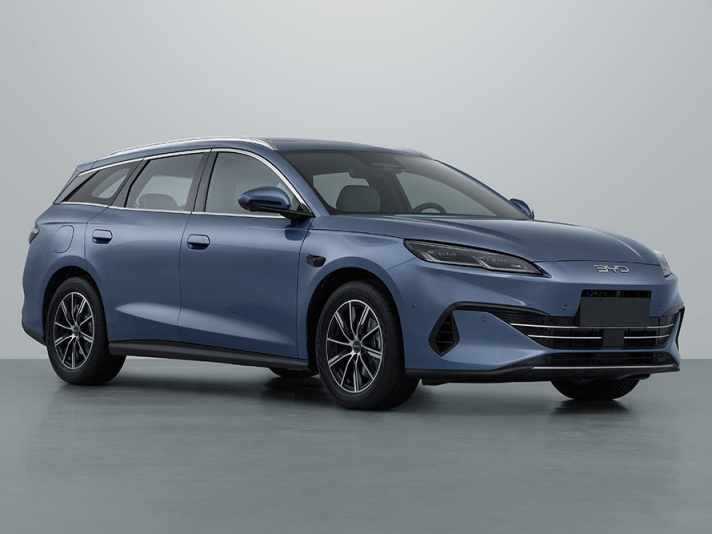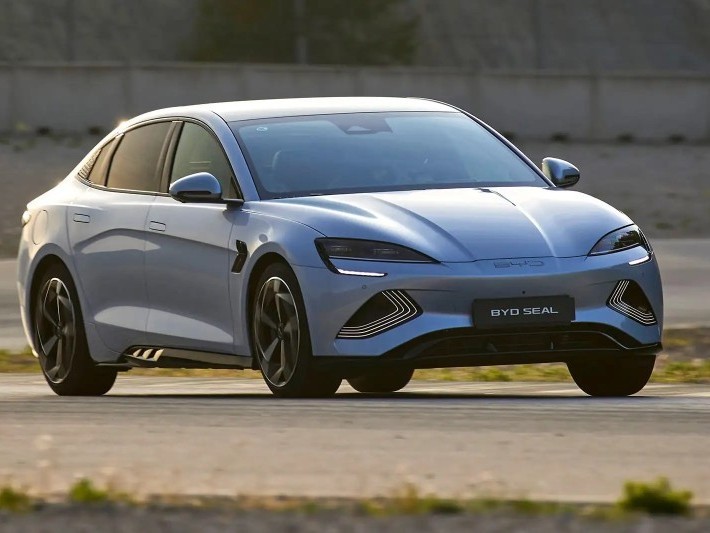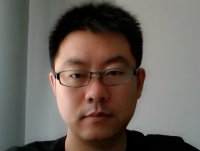Q
What's the Length of BYD Seal?
The length of all three versions of the BYD Seal(Dynamic EV、Premium (Extended Range)、Performance AWD) is 4,800 mm. This measurement places the BYD Seal in the D-Segment, which typically indicates a mid to full-size car. A long length usually contributes to more interior space, especially for rear-seat passengers in terms of legroom, which can make long journeys more comfortable for all occupants. Additionally, the 4,800 mm length, combined with its 2,920 mm wheelbase, helps provide a stable ride, as the long wheelbase distributes the vehicle's weight evenly, reducing pitching and rolling during acceleration, braking, and cornering.
Special Disclaimer: This content is published by users and does not represent the views or position of PCauto.
Related Q&A
Q
What Segment Does BYD Seal Belong to?
The BYD Seal belongs to the D-segment cars. D-segment cars are typically mid to large-sized vehicles, well-known for striking a balance between space, comfort, and performance.
The BYD Seal has a body length of 4,800 millimeters, a width of 1,875 millimeters, and a wheelbase of 2,920 millimeters, offering passengers a relatively spacious interior. The trunk space is also quite decent. Such specification makes it suitable for comfortable long - distance trips and can meet the sufficient space requirements for daily use. Moreover, in terms of performance, the Seal provides different versions with various power outputs. It can provide a smooth daily driving experience and also offer a more exciting high - performance driving feel. Whether for family users or individual users who desire more space and better performance in their vehicles, the D - segment BYD Seal is an appealing choice.
Q
What's the Reslae Value of BYD Seal?
The BYD Seal, a relatively new electric vehicle in the Malaysian market, currently lacks complete data on its resale value, but general resale value for EVs can provide some references. Due to rapid advancements in EV technology, the resale value of electric vehicles typically declines slightly faster than that of comparable internal combustion engine (ICE) vehicles in the first three years—around 50%-60% for EVs versus 60%-70% for ICE cars.
Key factors influencing resale value include battery health (BYD offers an 8-year/160,000 km battery warranty), growing brand recognition (BYD has shown strong performance in recent years), and the maturity of EV infrastructure (such as charging network development). Compared to similar ICE vehicles, the BYD Seal's extended battery warranty and lower operating costs (electricity being significantly cheaper than fuel) may help mitigate depreciation.
For prospective buyers, it is advisable to consider certified pre-owned programs and maintain complete service records to preserve resale value. As EV adoption increases, more definitive resale value data will be provided.
Q
What's the Displacement of BYD Seal?
The BYD Seal is an electric vehicle, so it doesn't use the traditional "CC" (cubic centimeters, used to measure internal combustion engine displacement) as a metric. It provides different versions, such as the Dynamic EV, Premium (Extended Range), and Performance AWD. In terms of the powertrain, the Dynamic EV version has a total motor power of 150kW, a maximum horsepower of 204PS, and a total torque of 310N·m. The Premium (Extended Range) version has a total motor power of 230kW, a maximum horsepower of 308PS, and a torque of 360N·m. The Performance AWD version is more powerful, with a combined system power of 390kW, a combined horsepower of 523PS, and a combined torque of 670N·m. These motors can provide efficient and strong power output, meeting different consumers' needs for speed, range, etc. Moreover, the all - electric drive also complies with the current trend of environmental protection and energy conservation.
Q
What's the PCD Size of BYD Seal?
The PCD (Pitch Circle Diameter) of the BYD Seal is 5×114.3, which means the wheel hub has 5 bolt holes evenly distributed on a circle with a diameter of 114.3 millimeters, matching the standard used by many mainstream Japanese vehicles (such as Honda and Toyota). So, it's easy to find compatible wheel hub options for modification or replacement in the Malaysian market.
Beyond PCD, wheel modifications also require attention to other parameters, including the hub bore (recommended to use OEM-concentric hub rings for precise fitting), offset (ET value), and wheel width to avoid affecting suspension geometry or causing friction. For wheel upgrades, it is advisable to choose EV-rated products that can accommodate the Seal's battery weight and prioritize purchasing through BYD-certified channels to ensure safety and compatibility.
Q
Does BYD Seal Support Apple Carplay?
The BYD Seal doesn't have the Apple CarPlay feature. Apple CarPlay is a system developed by Apple Inc., which allows iPhone users to connect their devices to the in-vehicle infotainment system. Although some car models in the market support this feature, the BYD Seal isn't one of them.
However, the BYD Seal has its own advanced infotainment system. It's equipped with a 15.6 - inch intelligent rotating touchscreen, which can provide a wide range of entertainment and vehicle control functions. This car also adopts a comprehensive set of standard configurations, such as various safety systems, comfortable seats with multiple adjustment options, and a high - quality sound system with 12 Dynaudio speakers. Even though the Seal doesn't have Apple CarPlay, its own infotainment capabilities can still bring users a convenient and pleasant driving experience.
Q
What's the Brand of BYD Seal's Tire?
The original tires of the BYD Seal are usually high-performance tires from Michelin or Continental. The specific tire models might be Pilot Sport EV or EcoContact 6, which are optimized for electric vehicles to match its powerful performance and noise reduction requirements. These tires are characterized by a low rolling resistance to improve the vehicle's range, the reinforced structures to handle the additional weight of EVs, and noise-reducing tread patterns to minimize road noise.
If you need to replace the tires, it is recommended to choose EV - specific tires of the same specifications. Pay attention to the size markings such as 235/45 R19 or 245/40 R20 (depending on the specific vehicle configuration), and also consider the wet - surface grip and wear - resistance index. When purchasing, you can go through BYD's official services or authorized tire dealers to ensure you get products that are suitable for the characteristics of electric vehicles.
Q
Is BYD Seal a Good Choice? Learn the Pros and Cons Here
The BYD Seal is a truly outstanding electric sedan that boasts high competitiveness in the Malaysian market. It's equipped with BYD's advanced e-Platform 3.0 technology and efficient Blade Batteries, offering excellent range performance (up to approximately 570 kilometers under the WLTP standard) and fast charging capabilities, which perfectly meet the local long - distance driving needs.
This car stands out with its remarkable power performance. The dual - motor all - wheel drive version can accelerate from 0 to 100 km/h in just 3.8 seconds. The driving experience is comparable to that of high - performance fuel - powered vehicles. Meanwhile, the electric system provides a smooth and quiet ride.
The interior uses high - quality materials and has luxury features such as a 15.6 - inch rotating central control screen and a Dynaudio sound system. It's also equipped with BYD's DiPilot intelligent driving assistance system to enhance driving safety.
As a pure - electric vehicle, it outperforms traditional fuel - powered cars in terms of maintenance costs, environmental - friendliness, and technology equipment. Although the price is not low, compared with other vehicles in the same class (like the Tesla Model 3), it has advantages in terms of cost - effectiveness and local after - sales service. It's a great choice for Malaysian consumers who are looking for high performance and low vehicle - using costs.
Q
What's the Width of BYD Seal?
The width of all BYD Seal variants is uniformly 1875mm. Vehicle width refers to the horizontal distance between the outermost rigid fixed protrusions on both sides within the vehicle's longitudinal symmetrical plane. This width dimension not only influences the visual effect of the vehicle's exterior, giving it a more imposing and stable appearance, but also affects the interior space layout, indicating a relatively spacious lateral cabin area, providing a more comfortable riding experience for both drivers and passengers, particularly ensuring rear occupants do not feel overly cramped. Additionally, during driving, the width contributes to stability to a certain extent, with an appropriate width helping to enhance the vehicle's stability during high-speed driving or cornering.
Q
What's the Road Tax of BYD Seal? How to Calculate It?
Currently, all electric vehicles registered in Malaysia are exempt from road tax, with the tax exemption period set to expire at the end of 2025. Starting from January 1, 2026, the road tax rates for electric vehicles will be calculated in tiers based on the vehicle's motor power:
The first tier applies to EVs with motor power below 100kW, where the tax increases by RM10 for every additional 10kW. The second tier applies to vehicles with 100kW to 210kW, where the tax increases by RM20 for every additional 10kW. The third tier covers EVs with power between 210kW (exclusive) and 310kW, where the tax increases by RM30 for every additional 10kW.
Taking the BYD Seal models as an example:
The 2024 BYD Seal Dynamic EV, with a total motor power of 150kW, falls under the second tier. Since it exceeds 100kW by 50kW, the road tax is calculated at RM20 per 10kW, resulting in RM100.
The 2024 BYD Seal Premium (Extended Range), with a total motor power of 230kW, falls under the third tier. Exceeding 210kW by 20kW, the road tax amounts to RM60.
The 2024 BYD Seal Performance AWD, with a total motor power of 390kW, also falls under the third tier. Exceeding 210kW by 180kW, the road tax is calculated at RM540.
Q
What‘s the Oil Capacity of BYD Seal's Engine?
The BYD Seal is an electric vehicle (EV), so it doesn't require engine oil but is powered by electric motors.
The three variants of the BYD Seal, namely the 2024 BYD Seal Dynamic EV, 2024 BYD Seal Premium (Extended Range), and 2024 BYD Seal Performance AWD, all run on electricity. They adopt battery systems like the BYD Blade Battery or Lithium iron phosphate battery for energy storage, and electric drivetrains.
For EVs, maintenance focuses more on battery health, charging system checks, and the condition of electric components rather than engine oil changes, making them more environmentally friendly and often require less frequent maintenance compared with traditional gasoline or diesel-powered cars.
Latest Q&A
Q
How much does a 2022 Honda Civic battery cost?
The battery price for the 2022 Honda Civic in Malaysia ranges from approximately RM300 to RM600, depending on the model and battery brand. Original equipment (OEM) batteries usually cost a bit more, while third-party brands like Panasonic, Amaron, or Bosch might offer more budget-friendly options. The specific price is also influenced by battery capacity (such as specifications like 40B20L or 55D23L) and the warranty period. It's advisable for car owners to choose a battery that matches the original specifications when replacing it to ensure compatibility with the vehicle's electronic system. Additionally, consulting local authorized dealers or reputable auto repair shops is a good idea, as they often provide free installation and testing services. Furthermore, regularly checking the battery's health (such as voltage and electrolyte levels) and avoiding prolonged vehicle inactivity can help extend its lifespan. If you experience difficulty starting the car or notice dim headlights, these could be signs of a aging battery, and it should be replaced promptly to avoid the hassle of breaking down on the road.
Q
How many miles does a 2022 Civic last?
With proper maintenance and regular use, the 2022 Honda Civic typically has a lifespan of between 200,000 to 300,000 miles (approximately 320,000 to 480,000 kilometers). Of course, its actual lifespan depends on things like your driving style; how often you service it; and the road conditions you encounter. The Civic is well - known for its reliability and durability—even here in Malaysia's tropical climate. Stick to regular oil changes, inspect the cooling system regularly, and maintain proper tire pressure, and you’ll further extend its lifespan.
Malaysia’s roads can be varied too—congested city traffic and long highway stretches both cause different levels of wear and tear. That’s why I’d recommend servicing every 6 months or 5,000 to 10,000 kilometers. It’s the best way to keep critical parts like the engine and gearbox in top shape. If you’re really aiming to keep your Civic running for the long haul, choose high - quality engine oil and genuine parts. They might seem like small details, but trust me, they play a crucial role in maintaining the car's long - term performance.
All in all, the 2022 Honda Civic is a durable pick for the Malaysian market. With proper and regular maintenance, it can ensure years of reliable driving.
Q
Does the 2022 Honda Civic have any recalls?
As of 2022, there were indeed some recall records for the 2022 Honda Civic in the Malaysian market. The main issue was with the Airbag Control Unit (ACU) software, which could potentially prevent the airbags or seatbelt pretensioners from deploying properly in a collision. Honda Malaysia has notified affected owners through official channels to arrange for a free software update. Additionally, certain models might experience engine stalling due to a manufacturing defect in the fuel pump module, and Honda has proactively recalled these vehicles to replace the relevant components.
For Malaysian owners, it's advisable to check the specific recall status of your vehicle by entering the Vehicle Identification Number (VIN) on Honda's official website or by directly contacting an authorized service center to confirm. Recalls are a normal part of a car manufacturer's commitment to product responsibility, and Honda's prompt response demonstrates its dedication to safety.
Malaysian owners who notice any abnormalities with their vehicles, such as dashboard warning lights illuminating or a loss of power while driving, should contact after-sales service promptly. You can also proactively ask technicians about the latest recall information during regular maintenance to ensure your car is in optimal condition.
Q
How to pre-start a Honda Civic 2022?
To pre - start your 2022 Honda Civic, first make sure the key is within range—usually 1 - 2 meters. Press the unlock button to wake up the system; then quickly press the "Engine Start" button twice without stepping on the brake. This puts the car into "ACC mode," where the dashboard lights up partially but the engine stays off—perfect for operating the radio or the windows. If you need full power for a system check, just press the start button once more (still no brake) to switch to "ON mode."
Malaysia’s heat is no joke, so pro tip: when pre - starting, hold the unlock button for 3 seconds to turn on the air conditioning to ventilate the cabin. But avoid doing it frequently—frequent pre - starts can drain the battery. If the car’s been sitting a while, it's better to start the engine normally to let the battery recharge.
A note on the engine: The 2022 Civic’s 1.5T Earth Dreams engine uses direct injection. Unlike old carburetor cars, there's no need for the traditional "warm - up" process—the ECU adjusts fuel delivery automatically on cold starts. Just avoid idling for more than 3 minutes, or you may receive an environmental protection warning (thanks to JPJ’s idle emission rules here).
Rainy season? Pre - start becomes your best friend for pre - checking TPMS and wiper condition. However, note that Honda Sensing features only activate once the engine’s properly running.
Q
What kind of battery is in the Honda Civic 2022?
The 2022 Honda Civic in the Malaysian market comes equipped with a 12V maintenance-free lead-acid battery, typically either the wet-flooded type or AGM (Absorbent Glass Mat) variant. Specific specifications can vary depending on the trim level—for instance, the 1.5L turbocharged models might feature higher-performance batteries to support the start-stop system. These batteries boast strong vibration resistance and low self-discharge rates, making them well-suited for tropical climates. It's advisable to regularly check the terminal cleanliness and electrolyte levels (for wet batteries) to maximize lifespan.
For Malaysian drivers, the hot climate can accelerate battery degradation, so avoiding prolonged use of in-car electronics with the engine off and scheduling professional battery checks every 2-3 years are crucial. When replacement is needed, Honda recommends batteries meeting JIS or DIN standards, such as the 55B24L model (for certain variants). Reputable third-party options like Panasonic or Bosch with matching specifications are also viable, though compatibility should be verified.
Additionally, modern automotive electronics demand stable voltage supply—substandard batteries may trigger false sensor readings. For peace of mind and to preserve warranty coverage, having replacements done through authorized service centers is recommended.
View MoreRelated News

2025 BYD Seal Coming to Malaysia with DiSus-C Adaptive Suspension
JohnAug 13, 2025

BYD Seal interior design revealed: A fusion of modern technology and luxury
RobertJul 15, 2025

BYD Exports 214K Vehicles in Q1, Top Sales in 7 Markets
RobertApr 30, 2025

Photos of the BYD Seal 06 Touring Edition Reveal the Brand's Entry into a New Niche Market
JamesMar 24, 2025

BYD Wins Japan's Annual EV Award Again with Seal
MichaelMar 6, 2025
View More


















Pros
Cons